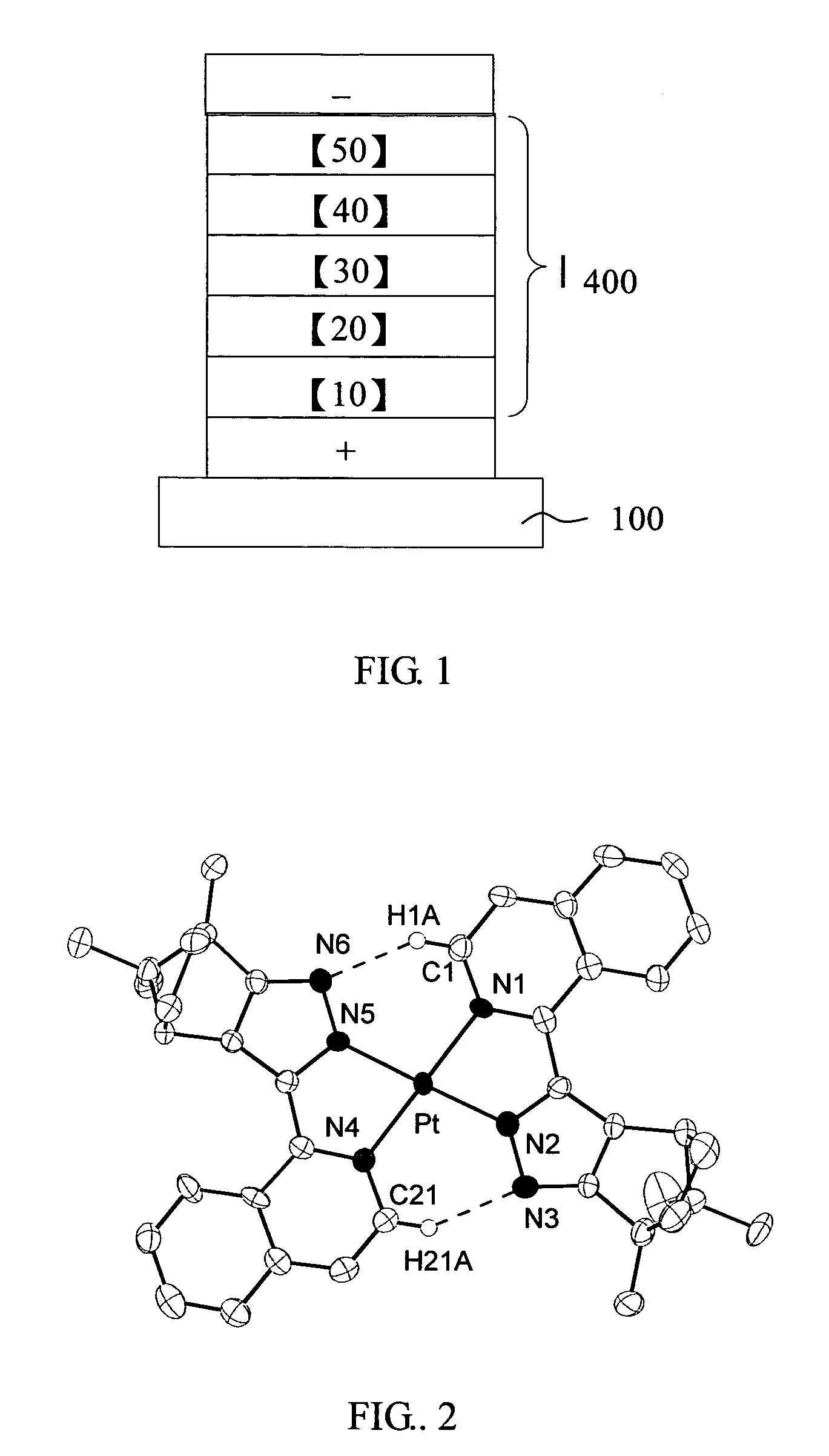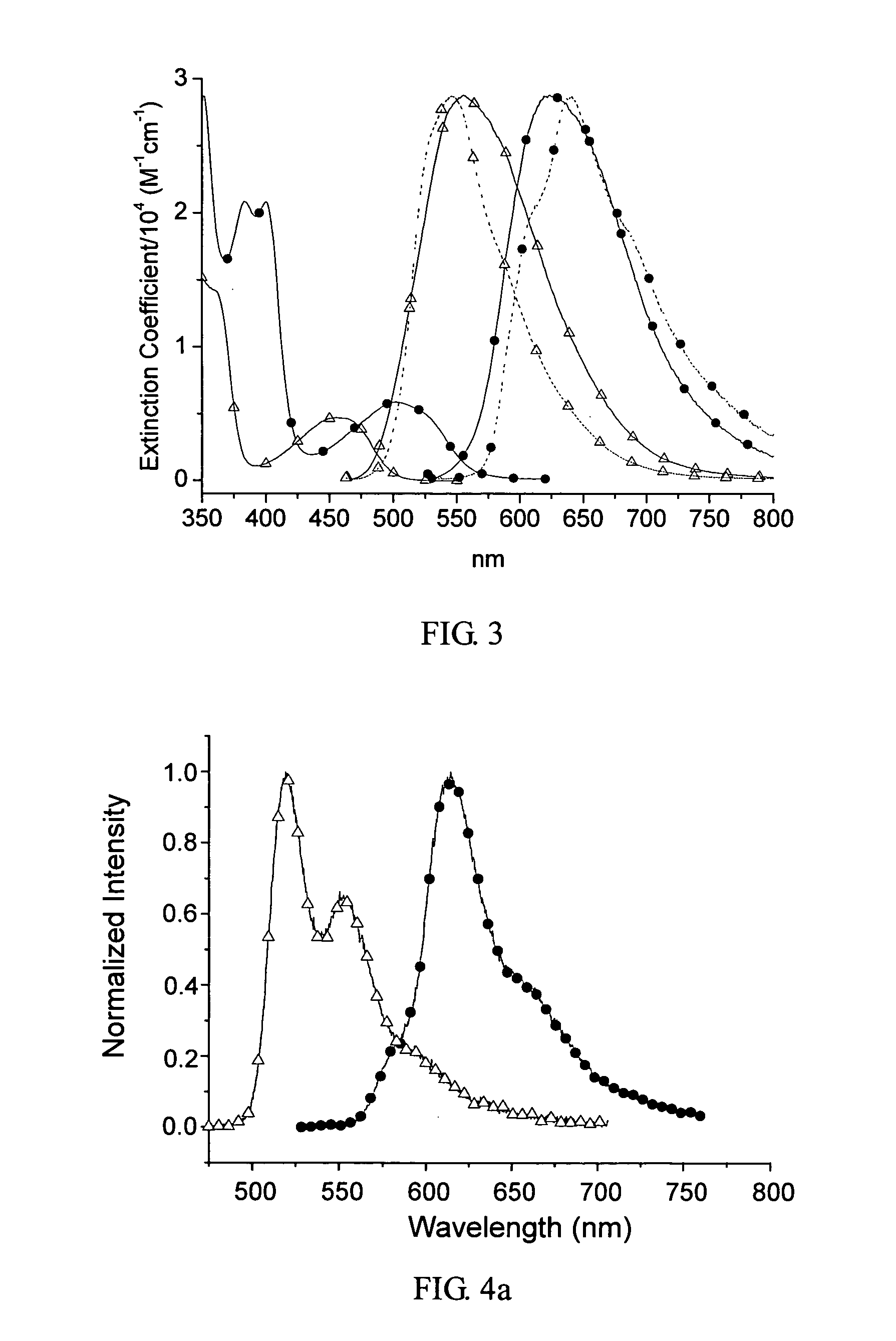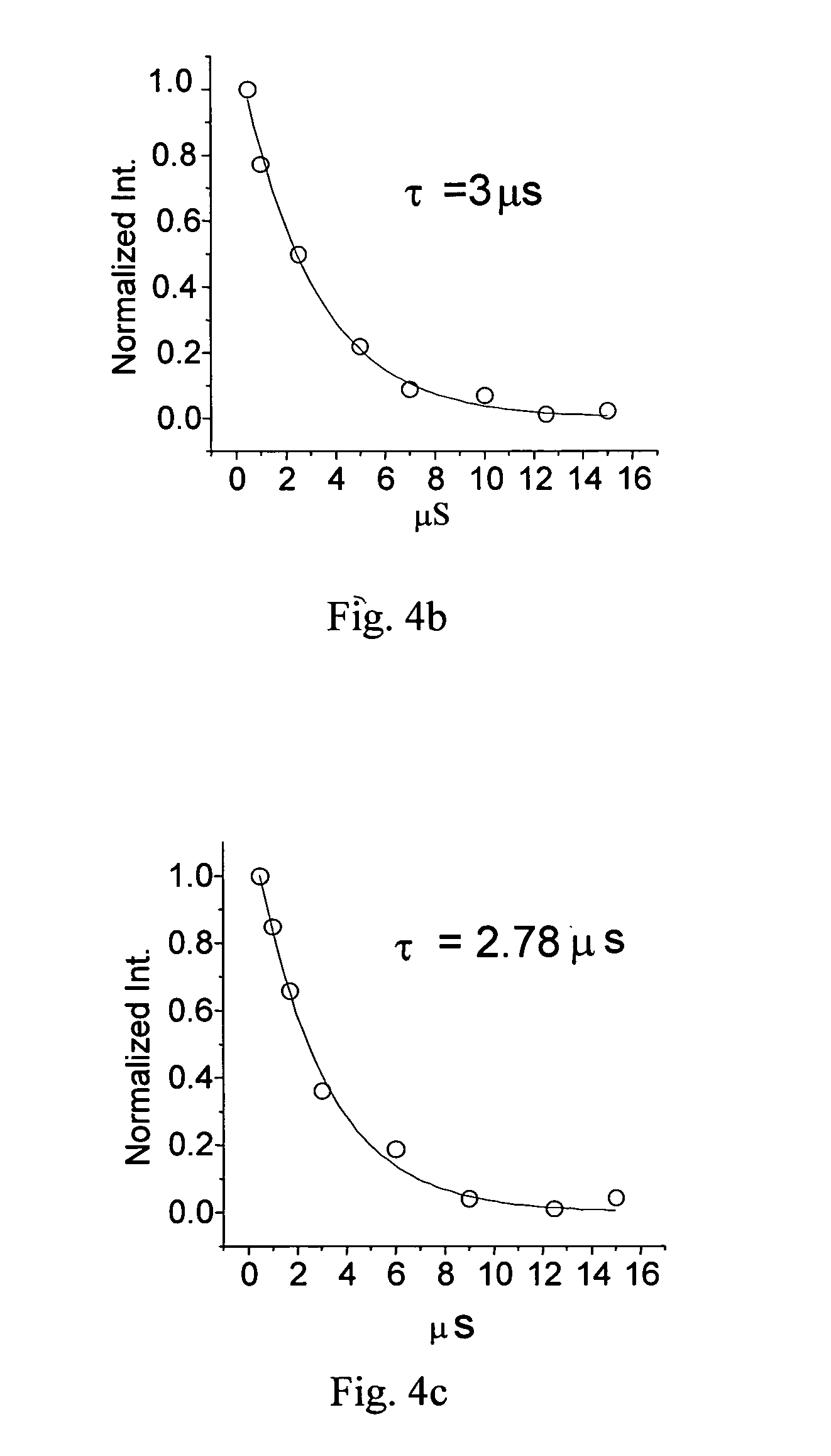Pt complexes as phosphorescent emitters in the fabrication of organic light emitting diodes
a technology phosphorescent complexes, which is applied in the field of organic light-emitting diodes (oled), can solve the problems of poor device efficiency and many intrinsic obstacles, and achieve the effects of suppressing the aggregation effect, reducing the phosphorescence radiative lifetime, and maximizing performan
- Summary
- Abstract
- Description
- Claims
- Application Information
AI Technical Summary
Benefits of technology
Problems solved by technology
Method used
Image
Examples
example 1
Synthesis of 4,8,8-Trimethyl-3-isoquinoline-1-yl-4,5,6,7-tetrahydro-2H-4,7-methano-indazole, (iqdz)H
[0068]To a stirred mixture of NaH (0.26 g, 10.8 mmol) and THF (10 mL) at 0° C. was added a solution of (1R)-(+)-camphor (1.64 g, 10.8 mmol) in THF for a period of 10 min. The temperature of the reaction mixture was slowly increased to RT and stirring was continued for about 30 min. Then the solution was heated to 60° C., and ethyl 1-isoquinolinecarboxylate (1.7 g, 8.5 mmol) in THF was added slowly and refluxed for about 3 h. After this period, the reaction mixture was cooled to 0° C. and quenched with dilute HCl until pH=8–9. Then it was extracted with ethyl acetate (2×100 mL), and the extracts were washed with brine, and water, dried over anhydrous MgSO4 and concentrated in vacuo to give a yellow oil (2.2 g). Without further purification, to a refluxing solution of the above oil (2.2 g) in EtOH (30 mL) was added dropwise hydrazine monohydrate (4.2 mL, 86.0 mmol) in EtOH. After the mi...
example 2
Synthesis of 4,8,8-Trimethyl-3-pyridin-2-yl-4,5,6,7-tetrahydro-2H-4,7-methano-indazole, (pydz)H
[0073]Using the same conditions as for (iqdz)H, starting from ethyl picolinate and (1R)-(+)-camphor, the title compound was obtained as white crystals (yield 34%).
[0074]Spectral data: MS (EI), m / z 253, M+. 1H NMR (500 MHz, CDCl3, 294 K): δ 8.58 (d, J=5.5 Hz, 1H), 7.69 (ddd, J=7.8, 7.5, 1.8), 7.53 (d, J=7.8 Hz, 1H), 7.15 (ddd, J=7.5, 5.5, 1.3 Hz, 1H), 3.03 (d, J=4.5 Hz, 1H), 2.14 (m, 1H), 1.87 (m, 1H), 1.35 (m, 1H), 1.24 (m, 1H) 1.31 (s, 3H), 0.98 (s, 3H), 0.71 (s, 3H). 13C NMR (125 MHz, CDCl3, 294 K): δ 167.6, 149.2, 149.1, 136.9, 133.5, 124.6, 122.1, 120.5, 61.2, 50.3, 48.2, 33.5, 27.2, 20.5, 19.3, 10.5. Anal. Calcd. for C16H19N3: C, 75.85; H, 7.56; N, 16.59. Found: C, 76.07; H, 7.48; N, 16.60.
Synthesis of Pt(pydz)2 (2)
[0075]
[0076]Using the same conditions as for Pt(iqdz)2 (1), starting from K2PtCl4 and the ligand (pydz)H, the title compound 2 was obtained as a yellow powder (yield 50%).
[...
example 3
Synthesis of Pt(iq3dz)2 (3)
[0079]
[0080]A solution of potassium tetrachloroplatinate (K2PtCl4) (0.1 g, 0.24 mmol), 3-isoquinoline-3-yl-7,8,8-trimethyl-4,5,6,7-tetrahydro-2H-4,7-methano-indazole, (iq3dzH, 0.16 g, 0.53 mmol) in a mixture of ethanol (15 mL) and water (5 mL) was heated at 80° C. for about 16 h. After cooling the mixture to room temperature, the precipitate was collected, washed with diethyl ether and dried under vacuum to give yellow solid 52% (0.1 g, 0.13 mmol). Crystals of Pt(iq3dz)2 suitable for X-ray analysis were obtained by recrystallization from a mixture of dichloromethane and hexane at room temperature.
[0081]Spectra data of (3): MS (FAB), observed m / z (actual) [assignment]: 800 (800) [M+]. 1H NMR (400 MHz, CDCl3, 294 K): δ 11.78 (s, 2H), 8.16 (d, J=8.0 Hz, 2H), 7.81–7.73 (m, 6H), 7.55 (ddd, J=6.8, 6.6,1.3 Hz, 2H), 3.17 (d, J=4.0 Hz, 2H), 2.20 (m, 2H), 1.92 (m, 2H), 1.50 (m, 6H), 1.46(2H, m),1.29 (m, 2H), 1.03 (s, 6H), 0.85 (s, 6H). 13C NMR (125 MHz, CDCl3, 294 K...
PUM
| Property | Measurement | Unit |
|---|---|---|
| area | aaaaa | aaaaa |
| pressure | aaaaa | aaaaa |
| area | aaaaa | aaaaa |
Abstract
Description
Claims
Application Information
 Login to View More
Login to View More - R&D
- Intellectual Property
- Life Sciences
- Materials
- Tech Scout
- Unparalleled Data Quality
- Higher Quality Content
- 60% Fewer Hallucinations
Browse by: Latest US Patents, China's latest patents, Technical Efficacy Thesaurus, Application Domain, Technology Topic, Popular Technical Reports.
© 2025 PatSnap. All rights reserved.Legal|Privacy policy|Modern Slavery Act Transparency Statement|Sitemap|About US| Contact US: help@patsnap.com



